An external antenna can help to improve the speed and reliability of your 4G or 5G home broadband connection.
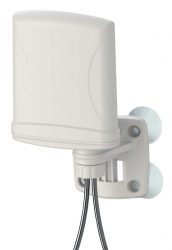 If you’re using a 4G or 5G home broadband service such as Three’s HomeFi (Huawei B311), Three’s Huawei B535, Vodafone’s GigaCube or EE’s 4GEE Home, attaching an external antenna to your router can help to improve both the speed and reliability of your internet connection.
If you’re using a 4G or 5G home broadband service such as Three’s HomeFi (Huawei B311), Three’s Huawei B535, Vodafone’s GigaCube or EE’s 4GEE Home, attaching an external antenna to your router can help to improve both the speed and reliability of your internet connection.
When choosing an external antenna, there’s a wide range of different antenna options to choose from. To start with, you’ll need to decide whether you want to buy an omni-directional antenna or a directional antenna. You should also check the frequency ranges supported by the antenna, the number of connectors it has and the polarisation of the antenna. The type of connector used by the antenna is also important (most 4G and 5G routers have either a SMA or TS9 connector).
In this article, we’ll discuss how you can use an external antenna to improve your 4G or 5G home broadband service and signal. We’ll look at router compatibility and the key things you should think about when choosing an external antenna for your router. We’ll also present our recommended options if you’re looking to buy an external antenna for use in the UK.
To find a relevant antenna, please select your router from the following drop down:
Antenna Finder
Find an antenna for your 4G or 5G router
Choose from the most popular routers:
Or select your router from the following list:
Contents
External Antennas for 4G & 5G Home Broadband
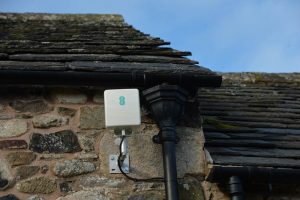 Over the past year, 4G and 5G home broadband has increasingly become a viable alternative to receiving fixed home broadband through a phone line or cable.
Over the past year, 4G and 5G home broadband has increasingly become a viable alternative to receiving fixed home broadband through a phone line or cable.
Nowadays, you can get unlimited home broadband through a 4G connection from as little as £20/month on Three’s HomeFi service (this comes with the Huawei B535 router included).
4G home broadband is also available through Vodafone’s GigaCube service (with the Huawei B528 router) and through EE’s 4GEE Home Router. Alternatively, some people decide to build their own home broadband solution with an unlocked 4G broadband router like the Huawei B525.
More recently, 5G home broadband has launched in some major urban areas. You can get 5G home broadband through Three’s 5G Home and Vodafone’s GigaCube 5G.
To get the maximum performance from a 4G or 5G home broadband connection, it’s sometimes worth investing in an external antenna. This can increase the signal strength of your connection, giving faster download speeds and a more reliable connection.
In this article, we’ll discuss external antennas for 4G and 5G home broadband, how you can choose one and how it can help with the speed of your connection.
Key Considerations
Before jumping ahead and buying an external antenna, it’s worth considering the following four things first:
1. Are download speeds being limited by your 4G/5G connection, or is it the Wi-Fi signal strength between your device and the router?
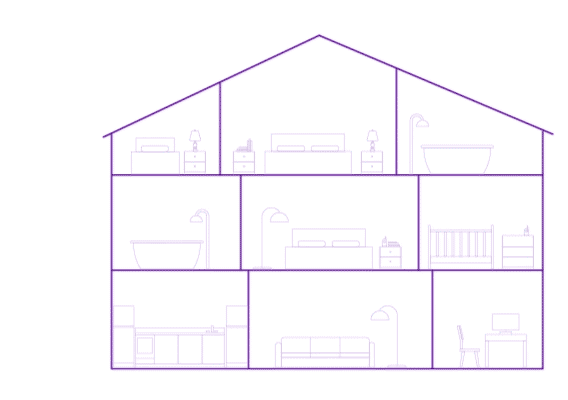 There are two things that will affect the download speed on your device: the quality of your 4G/5G signal and the strength of the Wi-Fi connection between your router and the device.
There are two things that will affect the download speed on your device: the quality of your 4G/5G signal and the strength of the Wi-Fi connection between your router and the device.
Before deciding what to do, it’s worth isolating these two factors. For instance, place your device right next to the router or attach a wired Ethernet cable to remove any impact from Wi-Fi signal loss.
If it’s the Wi-Fi signal that’s causing a reduction in download speed, you should look into mesh networking technology for Wi-Fi instead (e.g. with a solution like BT Whole Home Wi-Fi).
2. Test out different placements for your broadband router.
The best place to put your router is normally close to a window (ideally, a window that faces in the direction of your nearest phone mast). An upstairs window will usually work better than a downstairs window as there will be fewer obstructions in the way between the mast and your router.
3. Upgrading your 4G router may improve performance.
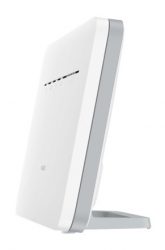 For instance, Three’s original HomeFi service came bundled with a Huawei B311 router. This is limited to Category 4 LTE speeds (up to 150Mbit/s download) and only supports single-band wi-fi connectivity (802.11n).
For instance, Three’s original HomeFi service came bundled with a Huawei B311 router. This is limited to Category 4 LTE speeds (up to 150Mbit/s download) and only supports single-band wi-fi connectivity (802.11n).
Upgrading to a more powerful router like the Huawei B535 HomeFi Plus will allow you to access Category 7 LTE speeds (up to 300Mbit/s). In addition, you’ll get dual-band Wi-Fi connectivity (including 802.11ac at 5GHz) plus four Gigabit Ethernet sockets for attaching wired devices to your network.
If you’re looking for an unlocked router, there are various options to choose from including the Huawei B525. This is available for around £120 unlocked and has very similar specifications to the Huawei B535.
Upgrading your 4G router may improve the performance of your service by as much as adding an external antenna to it.
4. Double check to make sure your router allows you to use an external antenna.
Most 4G and 5G home broadband routers will allow you to connect an external antenna. However, this functionality isn’t available on some devices like the Huawei AI Cube B900. It also isn’t possible to use an antenna with most Mi-Fi devices like the Huawei E5573bs-322.
If you’re using a 5G home broadband service, it’s worth noting that the external antennas currently available on the market will normally only work with 4G frequencies. For this reason, using an external antenna might cause you to lose 5G coverage. However, the overall impact could still be positive if it gives you a more reliable and faster 4G connection.
How To Choose an Antenna
In our opinion, there are six important things you should consider when choosing an external antenna for your 4G or 5G home broadband service.
Omni-Directional VS Directional Antenna
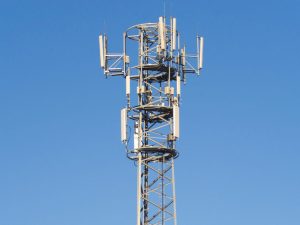 The first and most important thing to decide is whether you want an omni-directional or a directional antenna. The difference here refers to the direction that 4G and 5G mobile signals are travelling from and whether the antenna is able to pick up signals from that direction.
The first and most important thing to decide is whether you want an omni-directional or a directional antenna. The difference here refers to the direction that 4G and 5G mobile signals are travelling from and whether the antenna is able to pick up signals from that direction.
An omni-directional antenna is able to pick up a mobile signal whichever direction it is coming from. This has benefits if you’re living in an urban or sub-urban area as there will normally be multiple phone masts in different directions around you. Furthermore, because it’s omni-directional, there’s no need to specially align your antenna. The disadvantage is you’ll get lower gain compared to a directional antenna, but we still think it’s a better option for the majority of users.
A directional antenna is different in that it can only pick up a mobile signal coming from one direction. This makes it more complex to set up as you’ll need to find out where your nearest mobile mast is. Your antenna will need to be aligned to pick up that signal, something which may require a bit of trial and error. The advantage of a directional antenna is you can maximise the amount of gain from one direction. This makes it a good option for use in rural areas where you have only a poor or marginal signal from one nearby mast.
The following table summarises the key differences between an omni-directional and a directional antenna:
| Omni-Directional Antenna | Directional Antenna |
|---|---|
| The recommended option for most people. Most effective in urban and sub-urban areas where there are multiple phone masts around you. | Most effective in rural areas where there is a marginal signal from one nearby phone mast. Not recommended in other locations. |
| Fairly easy to set up as there’s no need to align your antenna, or to know where the nearest mast is. | More complex to set-up. You’ll need to align your directional antenna with the nearest phone mast. |
| Gives a decent amount of gain (signal improvement), but not as much as a directional antenna. | Gives the maximum amount of gain from one direction, so useful when you have marginal signal. |
| Will generally give a more stable connection as the antenna can communicate with multiple masts. | Can result in a less stable connection. The mast you’re using could be overloaded or down for maintenance. |
| Can be fairly low cost (starting from around £15). | Generally more expensive than omni-directional. |
In the vast majority of cases, we’d recommend starting off with an omni-directional antenna. A directional antenna is only worth considering if you’re already tried an omni-directional antenna and are not able to get a good connection with it.
Frequency Range
 When choosing an external antenna, it’s also important to make sure it can pick up the frequencies used by your mobile network to provide the broadband service.
When choosing an external antenna, it’s also important to make sure it can pick up the frequencies used by your mobile network to provide the broadband service.
In the UK, we use the following frequencies for our mobile broadband service:
- 800MHz is used for 4G coverage by EE, O2, Three and Vodafone
- 900MHz is used for 2G, 3G and 4G coverage by O2 and Vodafone
- 1400MHz is used for supplementary 4G coverage by Three and Vodafone
- 1800MHz is used for 3G & 4G coverage by Three and EE
- 2100MHz is used for 3G & 4G coverage by EE, O2, Three and Vodafone
- 2300MHz is used for 4G coverage by O2
- 2600MHz is used for 4G coverage by EE and Vodafone
- 3500MHz is used for 5G coverage by EE, O2, Three and Vodafone.
- 3600MHz is used for 5G coverage by Three.
In the next few years, additional spectrum at 700MHz and 3400MHz is due to be introduced for 5G mobile services in the UK. For more information, see our guide to mobile network bands & frequencies in the UK.
MIMO & Number of Connectors

Both 4G and 5G technology use a technique called Multiple In Multiple Out (or MIMO for short) to increase the maximum speed available on the network. The MIMO technique requires your router to use multiple antenna to communicate with the mobile network at the same time.
Nowadays, most 4G routers support 2×2 MIMO which means it will use 2 antenna to communicate with the network. For this reason, your router is likely to have two sockets for an external antenna to be connected. You can therefore choose to buy either two separate antenna or you can use a combined dual antenna system which will connect to both ports.
Polarisation
Mobile signals are linearly polarised. In other words, they “vibrate” in a certain direction as they travel (sometimes vertically, sometimes horizontally, and sometimes somewhere in between). The effectiveness of your external antenna in being able to pick up that signal depends on how well it is matched to the polarisation of that signal.
If you’re buying a combined dual-antenna system, it’s best to look for a cross-polarised antenna. This will have two antenna orientated 90° away from each other. This design means the antenna system can effectively pick up a signal regardless of which polarisation the incoming signal has.
If you have two separate antenna, look for the ability to rotate your antenna as required.
Cable Length
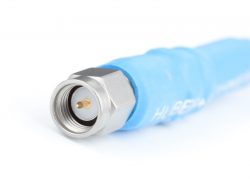 If you’re using an external outdoor antenna, it will normally come bundled with a cable which plugs in to your router. It’s best to choose the shortest possible length of cable for your installation. A cable that’s longer than necessary will cause a reduction in signal strength.
If you’re using an external outdoor antenna, it will normally come bundled with a cable which plugs in to your router. It’s best to choose the shortest possible length of cable for your installation. A cable that’s longer than necessary will cause a reduction in signal strength.
Normally, a 5 metre cable is recommended for most installations (the router should be moved and placed as closely as possible to the antenna to accommodate this). Due to signal losses from the cable, having a much longer cable will cancel out any benefit of having an outdoor antenna.
Connector Type
Finally, you should check the type of connector required by your router. Most routers use a SMA connector so you should normally look to buy a SMA antenna. Some routers use different connectors (e.g. the Huawei B618 has a TS9 connector and less commonly, other routers may use a CRC9 or FME connector). In this case, you can easily buy an adapter if needed (e.g. to convert your SMA antenna into a TS9 antenna).
The following table shows the required connector type on a selection of home broadband routers:
| Router | External Antenna Connector |
|---|---|
| BT 4G Home Hub (BT 4G Home Hub) | 2x SMA connectors |
| EE 4GEE Home Router | 2x SMA connectors |
| EE 4GEE Home Router 2 | 2x SMA connectors |
| EE 4GEE Home Router 3 (4GEE Home) | 2x SMA connectors |
| EE 4GEE WiFi (4GEE WiFi) | Not supported |
| EE 4GEE WiFi Mini (4GEE WiFi Mini) | Not supported |
| EE 5GEE Home Router 2021 (5GEE Home) | 4x TS-9 connectors |
| HTC 5G Hub (5GEE WiFi) | Not supported |
| Huawei 5G CPE Pro (Vodafone GigaCube 5G) | 2x TS-9 connectors |
| Huawei 5G CPE Pro (Three 5G Hub (2019)) | 2x TS-9 connectors |
| Huawei 5G CPE Pro | 2x TS-9 connectors |
| Huawei 5G CPE Pro | 2x TS-9 connectors |
| Huawei 5G CPE Pro | 2x TS-9 connectors |
| Huawei AI Cube B900 (Three 4G Hub with Alexa) | Not supported |
| Huawei B310 | 2x SMA connectors |
| Huawei B311 (Three HomeFi) | 1x SMA connector |
| Huawei B315 | 2x SMA connectors |
| Huawei B525 | 2x SMA connectors |
| Huawei B528 | 2x TS-9 connectors |
| Huawei B535 HomeFi Plus (Three 4G Hub (2019)) | 2x SMA connectors |
| Huawei B618 | 2x TS-9 connectors |
| Huawei B818 (Vodafone GigaCube 4G) | 2x TS-9 connectors |
| Huawei E5573bs-322 (Three 4G Mobile Wi-Fi) | Not supported |
| Huawei E5783B (Three 4G Plus Mi-Fi) | Not supported |
| Huawei E5785 (EE Huawei 4G WiFi 2) | Not supported |
| Sercomm LTE2122GR (Three 4G Plus Hub) | 2x connectors |
| TP-Link Archer MR600 (4G Internet WiFi Router) | 2x SMA connectors |
| TP-Link TL-MR6400 (Archer) | Not supported |
| Verve VH510B (Three Home Hub) | Not supported |
| Vodafone R219 (Vodafone Mobile Wi-Fi) | Not supported |
| ZTE MC801A | 2x TS-9 connectors |
| ZTE MC888 (Three 5G Hub (2024)) | 2x TS-9 connectors |
| ZTE MF286D (Three 4G Hub) | 2x SMA connectors |
| Zyxel NR5103E | 4x TS-9 connectors |
| Zyxel NR5103E v2 (Three 5G Hub) | 2x TS-9 connectors |
Some routers like the HTC 5G Hub and Huawei AI Cube B900 do not allow you to attach an external antenna.
Recommended Antenna
 If you’re looking for a fairly simple SMA antenna, Huawei offers an easy-to-install set of 2 external antenna for approximately £15. The two antenna are designed for use indoors and easily screw on to the back of your router to boost the received signal strength. The antenna are omni-directional and should be compatible with any router that uses a SMA connector (including the HomeFi B311, the Huawei B315, the Huawei B525 and the 4GEE Home router).
If you’re looking for a fairly simple SMA antenna, Huawei offers an easy-to-install set of 2 external antenna for approximately £15. The two antenna are designed for use indoors and easily screw on to the back of your router to boost the received signal strength. The antenna are omni-directional and should be compatible with any router that uses a SMA connector (including the HomeFi B311, the Huawei B315, the Huawei B525 and the 4GEE Home router).
If you’re looking for a more sophisticated antenna that you can mount outdoors, the Poynting XPOL-1 is our current recommendation. It’s an omni-directional antenna that’s compatible with all key 4G frequencies in the UK (it only lacks support for the very rarely used 1400MHz band 32 supplementary downlink). If you’re using 5G broadband, you can get the 5G-enabled Poynting XPOL-1 5G instead. The Poynting XPOL-1 has two antenna in a cross-polarised configuration hosted within a single housing. The antenna costs around £75 and has two 5 metre cables terminating in a SMA connector. There are a number of different mounting brackets included within the box for attaching the antenna to a pole, wall or window.
If you’re looking for a directional antenna, the Poynting XPOL-2 is worth a look at. It’s priced at around £115 (about £40 more than the omni-directional Poynting XPOL-1) but otherwise has fairly similar specs to the XPOL-1. This includes full support for key 4G frequencies in the UK, two SMA antenna in a cross-polarised configuration, two 5 metre cables, etc. A 5G-enabled version is also available in the form of the Poynting XPOL-2 5G. As mentioned above, directional antenna require much more work in terms of alignment and configuration so you should also budget in the time required for this.
If you’re using the Vodafone GigaCube, Huawei B618 or Huawei 5G CPE Pro router, you’ll need a SMA to TS9 adapter for use in conjunction with these antenna.
If you’re using EE’s 4GEE Home service, there is a professional 4GEE Antenna installation service available to you. The installation charge for EE’s external antenna is £100. For this, they’ll install and position the antenna on an exterior wall of your property supplying a 5 metre cable from the antenna to your router.
If you’re using a 5G home broadband service, you’ll need an antenna that is able to boost 3.4-3.8GHz spectrum (not available on most 4G antennas). You can get the Poynting XPOL-1 5G if you’re looking for an omni-directional 5G antenna, or the Poynting XPOL-2 5G if you’re looking or a directional 5G antenna.
More Information
For more information, we recommend having a read of the FAQs on the Poynting website. They answer lots of frequently asked questions about topics such as how to install your antenna and where best to place it. The Solwise website also has a good overview of some of the key things to think about when choosing an external 4G antenna.
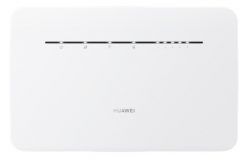
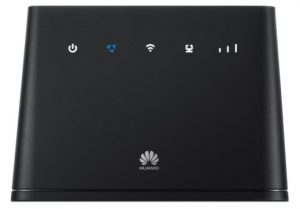
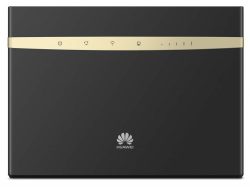
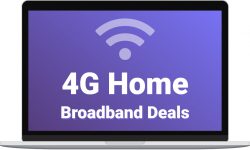





AlN said:
I have a big shark thin antenna and a Omni can you mix the two so I don’t need to buy another antenna?
Peter Ingle said:
Hi Guys. Good article, thanks. Is there a formula that can be used to determine the optimum distance between the pair of blade antennas for a 4G router ?
I want to mount 2x single external antennas on a caravan roof to be wired to the external antenna ports on my 4G router.
Without external antennas in a specified location I get 1Mbps. Fitting a pair of blade antennas in the same location gets me 3Mbps. If I fit two individual external antennas at my maximum height, each connected to one of the external antenna ports, what would be the best distance apart ?
Regards, Peter
Bill said:
We have good external 4G coverage by EE but our BT Hybrid Connect Device shows only one bar and the upload speed is a pityful 0.15Mbps. The hybrid connect device has two SMA connectors – is it compatible with a suitable external omni-directional 4G antenna to improve the signal strength?